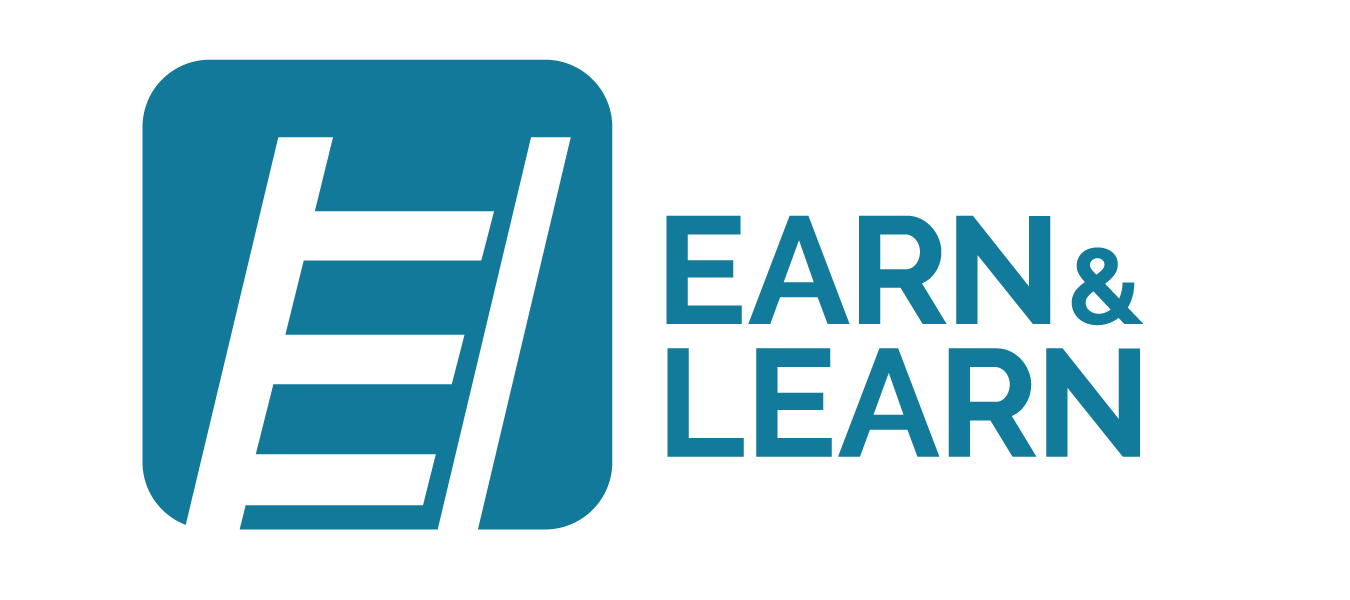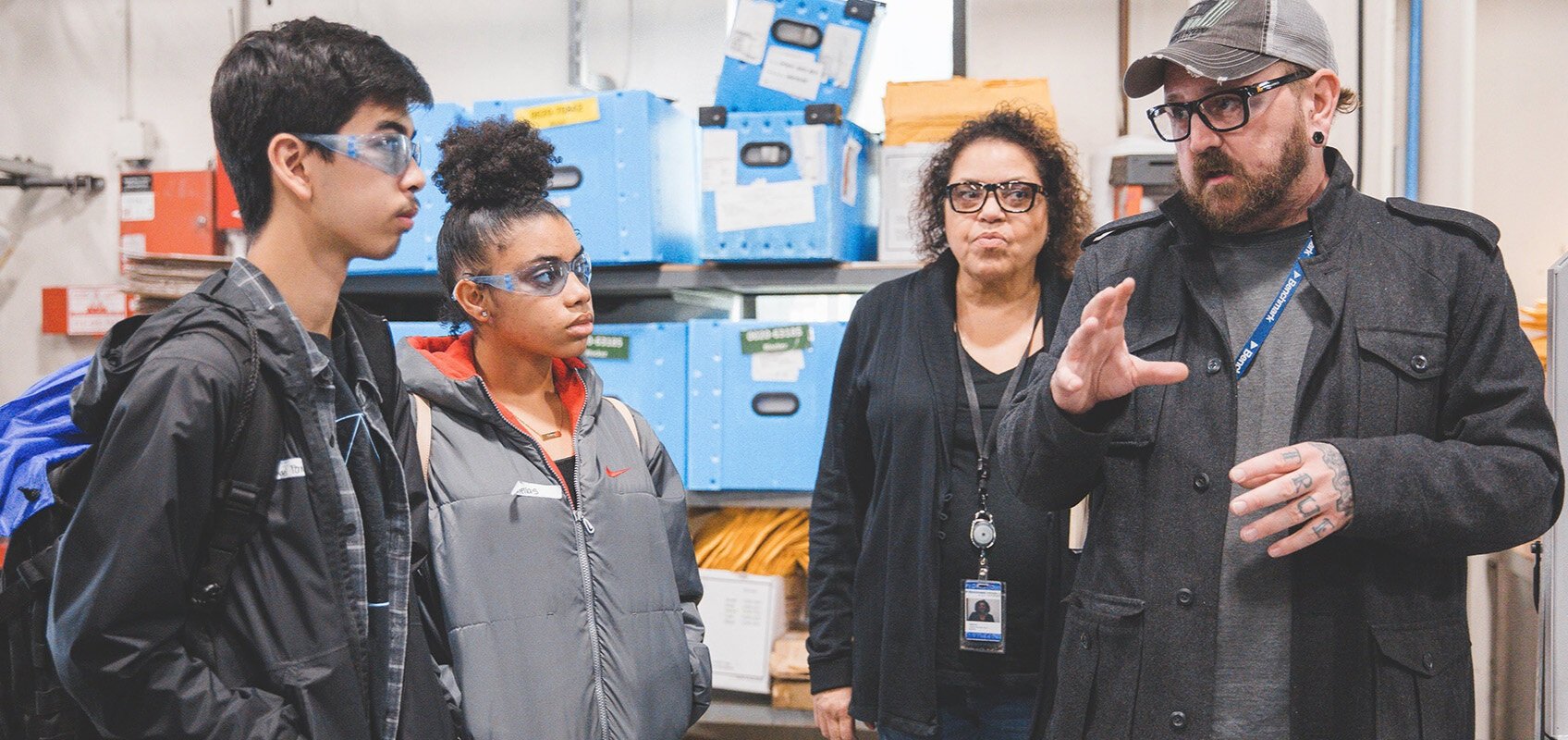Why We Need Work-Based Learning
Alternative on-ramps to high-wage careers must be created, or else the path to a learner’s career becomes a one-way street.
At Earn & Learn we are often asked many questions about work-based learning and why it is important, so I decided to sit down with Earn & Learn’s Founder and CEO, Gina Del Carlo, to answer some of those questions.
What is work-based learning?
Work-based learning is an umbrella term that is used for career exploration and the activities in a student's journey which takes them from career readiness and exploration all the way to job placement.
It is a continuum of sequential activities that build upon each other and should be available to every student early and often. These early activities are there to expose students to the world of work and all opportunities outside of their networks. Many times, you will see learners who have limited career paths in their community as well as within their own families, so the window into the world of work can be very small. This small window can then lead the student into only doing what's familiar to them or what they think others from their community do. If that mindset can be disrupted early enough and we can expose them to the people who look like them, who come from the same area as they do, and who say, “you too can have this career, and this is how I got to where I am today” then the student will begin to change their inner monologue regarding their future, and say, “I belong there, too.”
One great example is pilots. A pilot is a high-wage job, yet there's a huge shortage of pilots right now, and the average pilot is a Caucasian male in retirement age. So, the airlines desperately want to diversify their workforce. The problem is that it can be difficult and expensive to become a pilot, so if we can identify pilots who look like the students that the airlines are trying to recruit then the airlines can work with schools to support scholarships or pipeline development.
One way to do this is to have a work-based learning program that will bring pilots into the classroom at around sixth grade saying, “you can be a pilot, too. If you want to, here are some free resources such as free links to Latino Pilots Association or Sisters of the Skies, and here is how you can get there without having to go to a four-year college.” If a student gets that spark of interest, they can perhaps start with a mentor which can begin to change the trajectory of their life, change their family’s history, and ultimately change their community by showing others that a new path is possible.
At its core work-based learning is providing opportunities and democratizing access to those opportunities. It is that path that gets a student from having zero exposure to careers to supporting and creating a structured journey for them to explore, spark awareness, attend field trips, listen to guest speakers, gain mentors, and have all these opportunities in a variety of career paths to get them asking, “what am I interested in?”.
Are there any downsides to work-based learning?
There are harmful practices around work-based learning as well, such as the need for a certain grade point average to go on a field trip, only providing work-based learning to students who have been identified as gifted and/or talented, and/or not allowing students who have disabilities to participate. This is why there must be disruptors in the space who believe that everyone deserves work-based learning, and who can help both the employer and the educational institution figure out how to work together in a new, equitable way.
It is important to have organizations like Earn & Learn, who can help disrupt that type of practice while making it easier to build and create a network of connections that usually does not happen naturally. Supporting local employers, schools, and learners with finding careers that spark joy and interest ultimately helps our economic vitality by creating local pipelines, so employers are not forced to recruit outside of their state when that untapped talent is literally right in their backyard.
What would you say is the difference between workforce development and work-based learning?
Work experience is embedded in career development and workforce development. Workforce development is about the economic vitality of the region by investing in local talent and connecting them to those high-wage, family-sustaining wage careers in their communities. So, the difference is really between education entities and workforce development, where traditionally, education entities are about getting students to the next level of education - getting students into college - while workforce development is about preparing the younger student or adult so they can enter the workforce with skills aligned to the careers that are in demand and high-need.
Is that where apprenticeships come in?
Yes, and internships. In education, internships can be unpaid because the students are earning credit. In workforce development it's always about equity and to never do unpaid internships because then only the students who could afford to not get paid would take those opportunities. My opinion as a workforce development expert is that every internship should be paid. You cannot talk about diversity, equity, and inclusion while only offering these opportunities to students who can afford it. What if someone has an interest in a certain skillset, but they cannot take that internship because they need to have a job with a living-wage to survive?
That is why apprenticeships are so important. Apprenticeships are the gold standard and many times used to be focused only on trades. Now we're hearing more and more about non-traditional apprenticeships in all pathways, even teachers, so that students can get paid while they learn the necessary steps – once I attain this skill I get bumped up to this wage, and in the end it's a livable wage in a career that I’ve been earning skills for all along. This makes a lot more sense than a student having to work a minimum wage job just to survive while they're studying.
Therefore, workforce development is more about skills attainment. At its core is the belief that a four-year college is not the path for every student. There are many, many jobs that are wonderful and fulfilling and should be valued in our society that you can get with career training and apprenticeships.
What about high school career centers and counselors? What can they be doing?
It is important to be pushing back on high schools and career centers that only mention four-year colleges, and that every student should try for that future. Why aren’t they talking about local apprenticeship and paid internship opportunities, what the local community colleges have to offer, and celebrating the career path choice? More students would attend a school fair or speak to a career counselor if they knew the conversation wasn’t only going to be about applying to a four-year college.
The conversations also need to come from the parents and to be vocal, saying “my kid is doing career training and we're so proud”. All choices need to be celebrated publicly and privately. I do believe parents are beginning to see that, and it needs to keep building.
Colleges are also starting to learn about workforce development and prioritize it. Funding is beginning to come in because many are realizing that a large number of students are graduating from college il-prepared for the workforce.
Any final thoughts?
There needs to be better alignment and matching between the open jobs in the community and high-need jobs that pay a living wage. How much money someone makes is also extremely important. For instance, many people are surprised to hear how much an electrician or carpenter makes, which are high-need, good-paying jobs that can become a very fulfilling and rewarding career.
What drives our work and what's at the core of everything we do is the belief that every person deserves the opportunity to reach their fullest potential, and that a fulfilling future is out there. Without intervention and the support to show each person what is possible, the cycle will never be broken.
Success is when every young person can say, “I can create my own path”, and each adult can say, “my path can change”.
Contact Earn & Learn to find out how we can help with your work-based learning needs.


